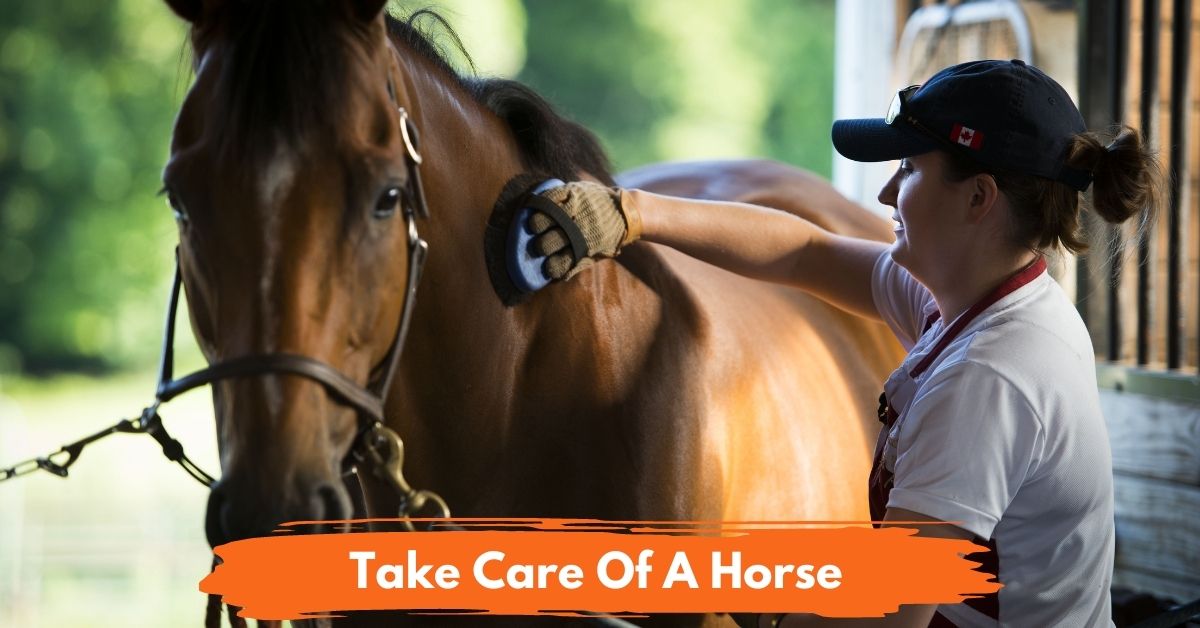
You have to pay attention to several things when taking care of a horse. Start with providing their basic needs such as forage, water, and shelter. Also, you have to keep an eye on daily grooming.
Seeing your horse grand and swift takes a lot of effort. But it’s about being a responsible horse owner. You won’t mind spending time and effort to meet their needs if you’re passionate about horses.
Since you care about them, you’re concerned about their health too. An appointment with a vet in a year ensures they’re fit enough to counter diseases. More details will follow as you can continue reading.
Make Sure Your Horse Is Getting Quality Forage
The first thing about taking care of a horse is getting quality forage. If you have pleasure and trail horses, quality forage is a must. It’s fine not to give them grains.
Know that most of the calories that horses need come from roughage. You may have known that they have delicate stomachs. But the digestive system of equines is suitable for roughage. It has a structure that can get nutrition from grassy stalks.
A horse can consume roughage equal to 1% to 2% of its body weight. It’s the nature of the equines to graze outdoors. You can keep up with this habit when horses are in the stall by providing them forage.
Due to their sensitive stomach, they eat the hay, then nap and eat again. Small meals are ideal. So they have time to travel per batch through their digestive tract.
You’ll know that hay has high quality if there are more leaves than the stem. It has a short seed head and is green. You should detect a fresh smell without molds and dust.
Meeting Water Requirements
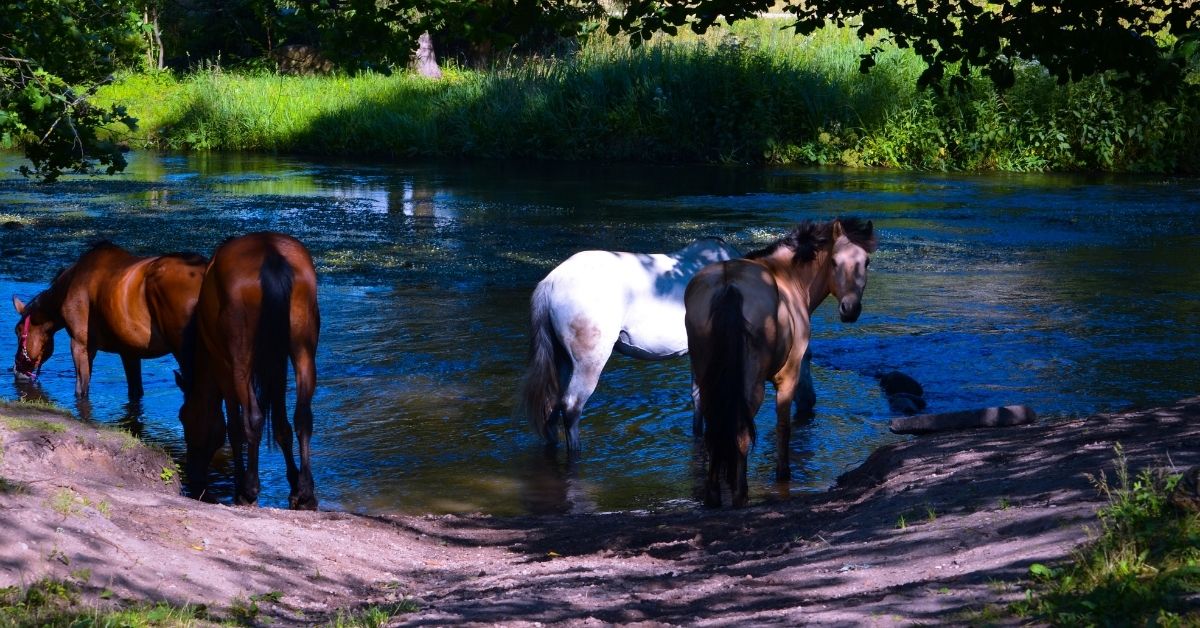
The daily water intake of an average horse is 5 to 10 gallons of fresh water. Even without feed, it can survive with water for 20 to 25 days. Take note that horses may only live 3 to 6 days when deprived of water.
When horses forage in summer, they can get water from the fresh grass. Hence, the desire to drink water decreases. It’s a different case in winter.
Horses have no choice but to consume dried hay or grass with only a bit of water. So, you have to give them more water. Many horse owners discovered that they prefer warm water during the cold season.
Don’t ignore the need to make your horses drink. If you do, your horse can suffer from dehydration. It can even lead to colic and death.
Providing Shelter For Your Horse
A three-sided, run-in shed is the ideal shelter for a horse. Reserve enough space for feed and bedding storage for the stall’s design. Include feed stations in your plan too.
The ideal shelter size for average horses is 12×12. Ponies will be fine in a 10×10 stall. Moreover, place trash bins inside your horse’s shelter. It’s essential to keep the area clean.
Thus, you must sweep the dust, remove cobwebs, and take out manure. Keep the floor dry and free from urine and mud.
Horses have delicate stomachs. So, ingestion of dirt, sand, or mud can cause serious digestive problems and hoof infection.
Rubber mats are the ideal cover for the stall’s floor. Ventilation also matters as it can cause the hay dust to pile up.
You have to change the bedding on a regular basis. Horses can sleep in a standing position. Still, they will need a space to lie down and rest at a certain time.
While your horses stay in the stable, ensure they’re protected from flies and bugs. For safety, take care of protruding nails and wobbly boards. Don’t let wires scatter around.
Grooming Your Horse
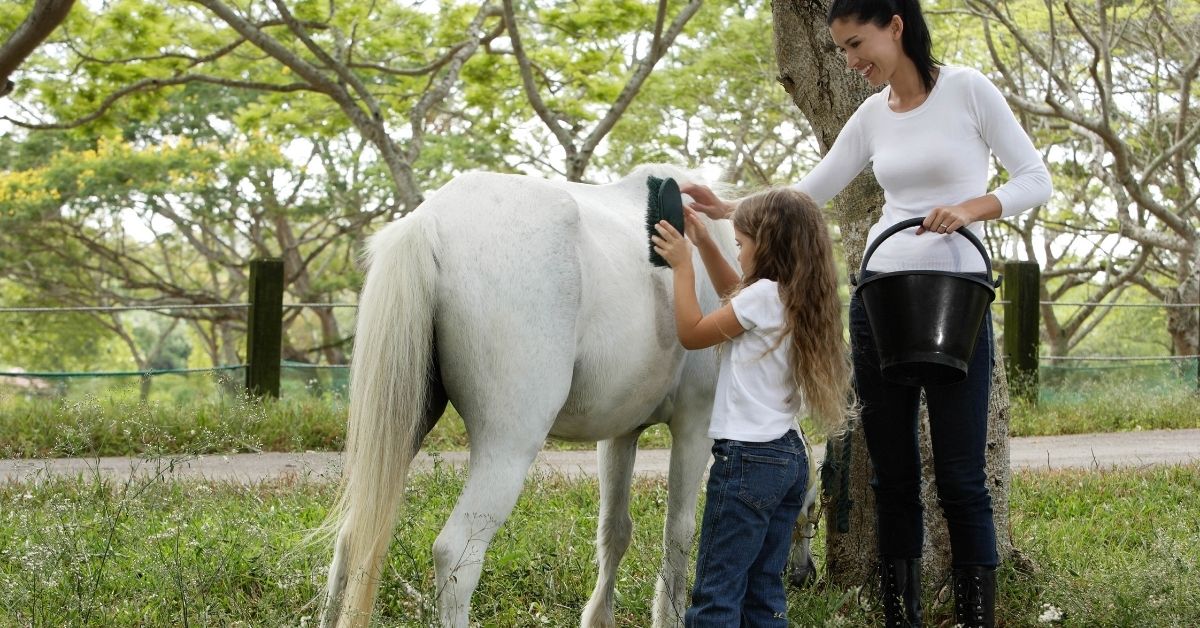
Groom your horse every day as it’s beneficial. It’s to remove dust, dirt, and mud from its body. Also, it’s a chance to check for scratches, blisters, and injuries.
While you remove sweat from a horse’s body, it improves blood circulation. Grooming is one of the ways to bond with your horse. It’s smart enough to appreciate your effort.
You need a rubber comb, dandy brush, mane brush, hoof pick, face brush, and sponge. When brushing, start from the head, then work your way down to the legs. Apply short, sweeping strokes on the lower legs, so the horse remains comfortable.
A sponge is the right item for cleaning sensitive areas, which are the face and the dock under the tail. Damp the sponge to clean the areas.
You want your horse to have a shiny tail and mane. The goal is to free it from tangles. One way to do it is to grasp the upper part as you run your hand and comb on the mane.
You can also start at the bottom using a mane brush. Work on small sections as you go up to straighten the hair. Pull or tug the hair with gentleness to not startle the horse. The condition of horses’ manes varies; some need a brush with stiff bristles.
You can bathe your horse on special occasions, like when its body is in mud. It doesn’t have to be daily. You can use mild pet shampoo and warm water during bathing. Don’t let suds get into its eyes. After the bath, wipe the horse’s face with a clean, soft towel or cloth.
Provide Your Horse With Companionship
Remember that your horse is a herd animal that craves companionship. It means that it needs to spend time with other horses.
You may think that they can be content with your presence. Despite being unable to be with your horse around the clock, you can’t do what other horses can. Mutual grooming and playing the horse game are things that only horses can do together.
If your horse can experience these things, it will feel stressed. It whines and runs around. It’s safe to say that it’s restless when it’s alone. Some can overcome this feeling and transform to ‘learned helplessness.
The state of ‘learned helplessness means that the horse gets used to having no horses around. But you’ll notice weight loss in those that can’t adjust to the situation.
Rest and Exercise
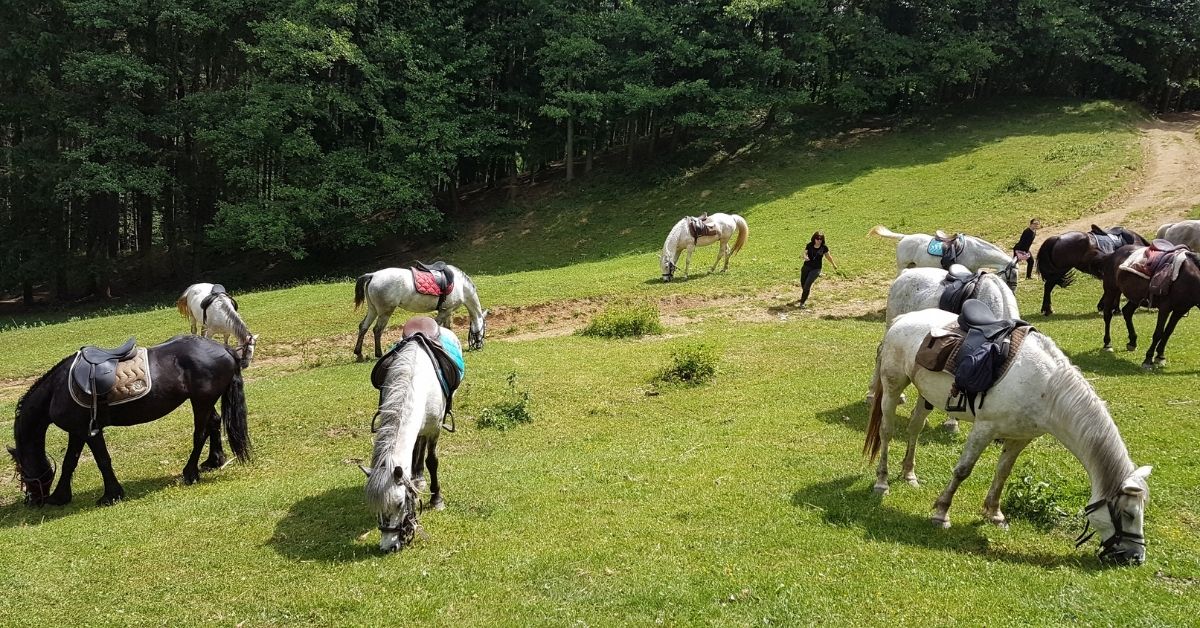
Horses love to engage in activities but like any other creature, they need to take a rest. But, do you know that your horse can have “active rest” ?
Remember that you should never put your horse on complete bed rest. A long period of stalling can depreciate fitness and strength. You may only let your horse have it if advised by a veterinarian. Here are the things you can do in the “active rest” mode.
Provide The Right Kind Of Rest
If you want your horse to rest, its mental health should also relax. To achieve the necessary rest, you must place it in a stress-free environment. Instead of containment in a stall, let your horse move around a turnout.
You may let your horse enjoy nature by letting it graze in the pasture. But it’s impossible during winter. Still, you can ride with your horse during the offseason. You can do it but with a reduced workload.
Complementary Skills
Apart from walking and riding the horse during active rest, you can work on a new skill. For instance, you can let your horse engage in quiet hacking. It can ease out a hot-headed horse’s stiffness in exchange for learning calmness.
Enjoy Different Activities
There are many activities that you can enjoy with your horse. Playing gymkhana games is one of them. You may also take your dressage horse to the beach or trail. They won’t only keep your horse active but also enjoy it.
Veterinary Care
It’s recommended that an adult horse should see the doctor once a year. Older ones that are over 20 years old should do it twice a year. They need frequent examinations or routine blood tests since old age attracts illness.
Vaccinations
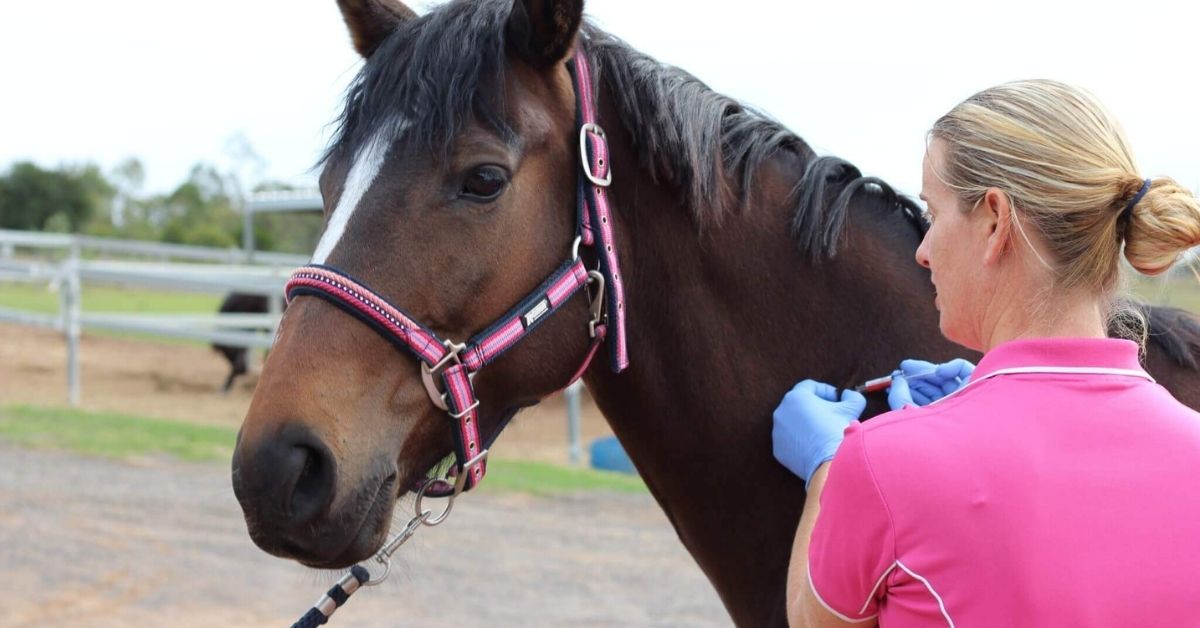
Vaccinations are preventive measures against infections and diseases. They boost a horse’s immune system, so it receives several vaccines as a regimen.
Your veterinarian can give you specific kinds of vaccines. According to circumstances and area, there will be necessary vaccines.
The protection of vaccines given to foals from birth lasts for six months. It follows if the foal had an intake of colostrum from its mother within 6 hours after birth.
A vet or trained person can administer the vaccine for your horse. Some choose to do it themselves. If you follow them, you need to learn to do it with proper guidelines.
You have to be careful about where you buy your vaccines. Make sure that you get them from a reputable source. The vaccines should be clean and in proper refrigeration.
Low-quality vaccines can deliver adverse effects. Your horse may suffer from malaise, fever, and inflammation in the injection area. They can also cause allergic reactions.
Deworming
When your horse grazes or forages, it can ingest parasites. Watch out for eggs of roundworms, pinworms, stomach bots, and tapeworms. They can enter the horse’s system. Know that more parasites infest younger horses.
Thus, the deworming program is crucial when caring for a horse. You can use a deworming paste every one or two months. Another option is the daily dewormer that you mix with the feed.
Proper grooming and pasture management can help to prevent parasite infestation. You may also submit horse feces to the vet to check for parasites.
Teeth
The horse’s teeth grow, but they also wear out as time passes. So, you’ll find sharp edges and points inside your horse’s mouth. Some hooks need trimming or the process called ‘floating’.
A vet can do the floating in a once-a-year appointment. Dental care is vital as related issues can ruin the horse’s diet. The animal struggles when chewing, so it will drop food during meals. Other problems are sore mouth, gum diseases, and tooth decay.
Hoof Care
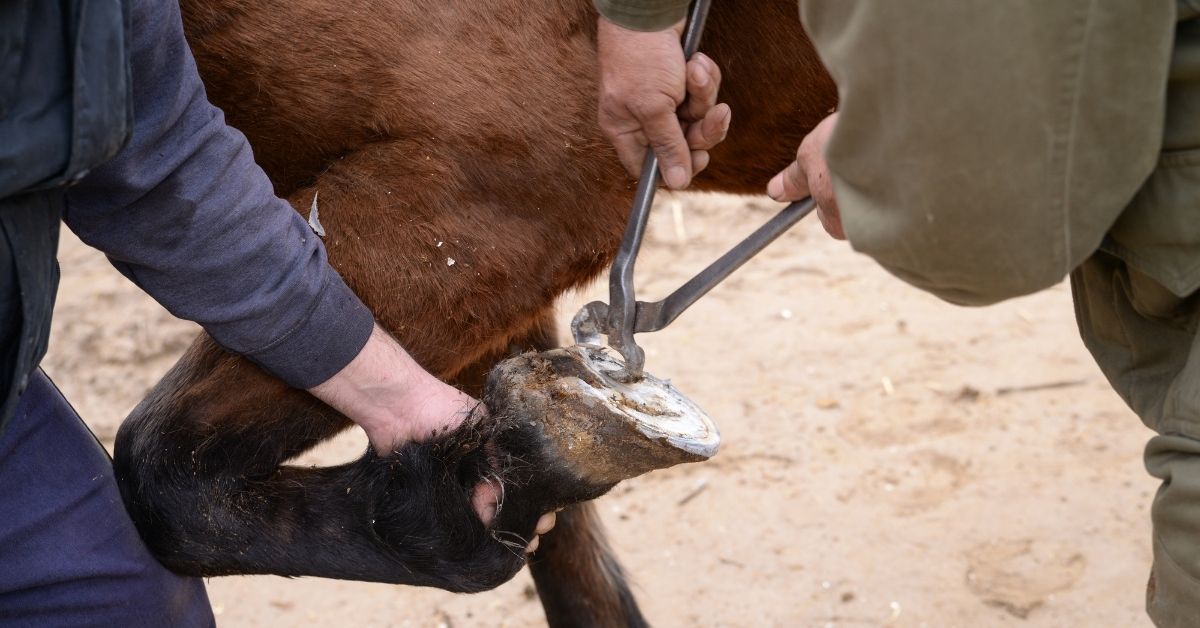
The schedule of hood trimming is every 6 to 8 weeks during summer. But it’s fine to do it every 6 to 12 weeks in winter. As you can see, there’s a time interval since hoof growth varies.
You must hire a reliable farrier to handle the routine hoof care and trimming. It’s important as proper shoeing can maintain your horse’s fitness and good performance.
Pasture Care
It’s normal if you find pasture care challenging. It’s due to the changes in environmental conditions and fluctuating horse population.
A horse on two to four acres is not hard to manage. But proper management is a must when there’s a higher density of animals. Here are the things that you need to do.
Test Your Soil
The level of pH and soil nutrients varies from farm to farm. Hence, you have to analyze the soil using a soil test kit.
Then, send it to a lab for analysis. The result will help you with soil fertilization and maintaining high-quality forage.
pH level should be 6 to 7. A pH greater than 7 is not good for grass forage as it shows acidity. The soil should contain nitrogen, potassium, and phosphorus for forage growth and quality.
Mowing
If you want dense, leafy vegetation in your pasture, you must mow it. The term for this effect is ’tillering.’ Mowing brings many benefits, like reducing weed species. You have to do it, so the grasses survive and stay healthy.
Let the Pasture Take a Rest
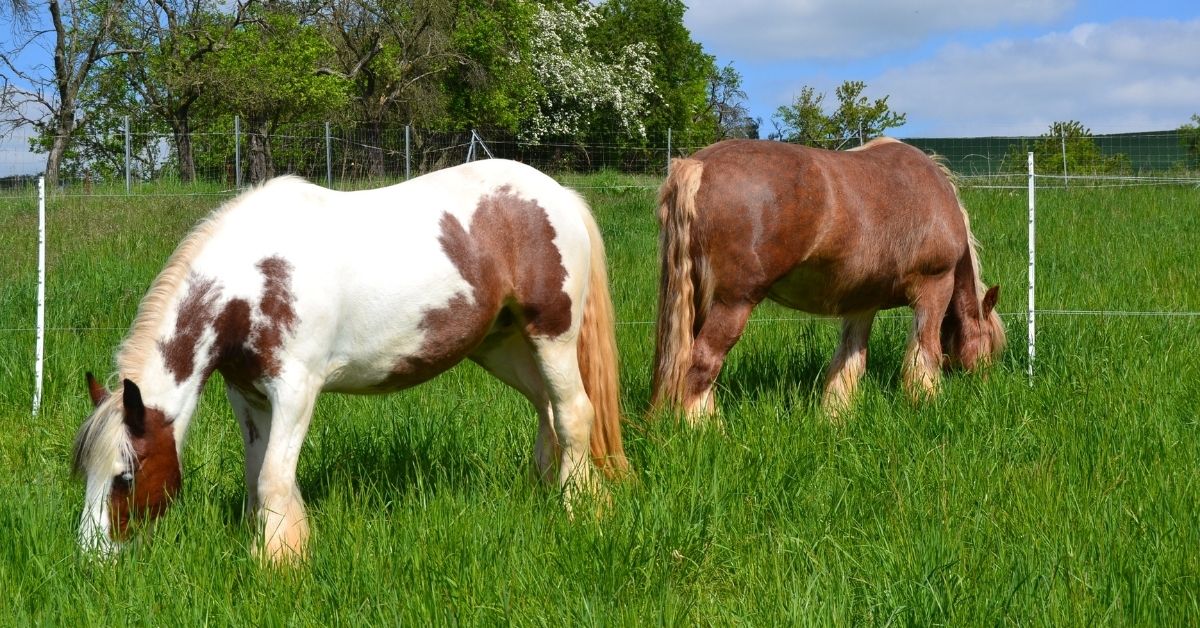
Horses have behaviors that can damage the pasture. They tend to graze in the same spot, so the plants don’t have ample opportunity to sprout and grow.
When a horse runs, it can crush the plants. It can also remove whole plants due to the precision of its mouth and teeth. These circumstances need planning strategies like rotational grazing.
In rotational grazing, you must divide the area with fences and apply two-paddock. The latter is a simple system that allows you to put the horses on another side of the pasture. On the other side, you allow the grass to flourish.
Transfer the horses to the area where grasses have grown to 7 to 10 inches tall. Let them graze until the height of the grass becomes 3 to 4 inches. Switch again to give grasses time to regrow.
Guarding Against the Weather
Horses prefer cold weather to hot ones. But they need more warmth so give them thick blankets. In summer, you still need to put thin saddle pads and blankets on them when they’re in the stall.
When the weather is hot, you have to close the stall’s window, so there’s enough shade for your horses. Do it during winter, too, as your horse needs protection from the frost. Still, you shouldn’t deprive them of enough insulation.
Conclusion
Taking care of a horse starts with providing basic needs such as forage, water, and shelter. These things affect your horse’s health. But it’s best to seek advice from a veterinarian. You don’t only visit a vet to cure diseases. Prevention is necessary, and it’s through vaccines and deworming.
Aside from the physical aspect, mental health is also your concern. You have to let it spend its time with other horses. Not only that, you have to ensure that there’s proper management in both stalls and pastures.
There are many things to deal with when you have horses. But there’s a fulfillment as you don’t worry about their health. You get to enjoy rides and activities with them without hassles.
